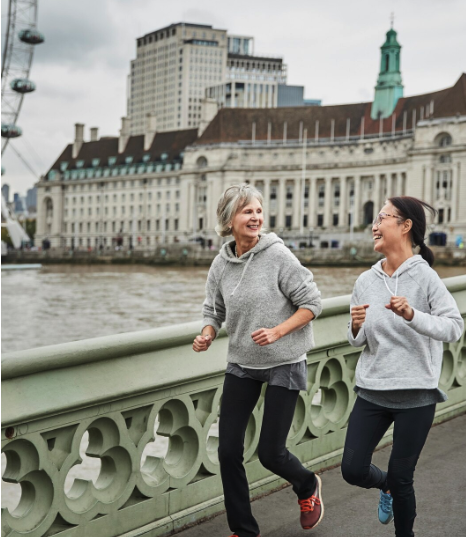Getting older is the biggest risk factor for dementia — however, evidence shows that there are things you can do to help reduce your own risk.
Keeping Active
Doing regular physical activity is one of the best ways to reduce your risk of dementia. Physical activity is good for your heart, circulation, weight control and mental wellbeing — all of which have an impact on how likely you are to develop dementia.
It is essential to find a way of being physically active that works for you. Sometimes it helps to start off with a small amount of activity and build it up gradually. You should also try to avoid sitting down for too long at one time. Think about activities that improve stamina, strength, flexibility and balance — all of which can help you stay independent for longer.

In practical terms, this means you may be able to walk longer distances, climb stairs more easily, and continue to get washed and dressed on your own. You’ll also find yourself more able to keep doing the things you enjoy most, such as hobbies. An added bonus: what’s good for your body is good for your mind. As well as helping to keep you sharp, staying active can improve mood and mental wellbeing, and help you deal with stress.
Make sure that the type and intensity of any activity you choose is right for your level of fitness. If you have previously been inactive, don’t start with vigorous exercise — build up to it gradually.
Choosing the Right Intensity
Moderate activity
Moderate activity raises your heart rate, makes you breathe faster and feel warmer. Examples include brisk walking, riding a bike, dancing or pushing a lawn mower. Most activities can become vigorous if you increase your effort.
Vigorous intensity activity
Vigorous activity makes you breathe hard and fast. At this level, you won’t be able to say more than a few words without pausing for breath. Examples include jogging or running, walking up stairs and aerobics.

Very vigorous / HIIT
Very vigorous activities are performed in short bursts of maximum effort with rest in between (High Intensity Interval Training, or HIIT). Examples include lifting heavy weights, circuit training, sprinting up hills or running upstairs.

You Should
- Aim to be physically active every day. Any activity is better than none — the more you do, the better.
- Do strengthening activities that work all major muscles (legs, hips, back, abdomen, chest, shoulders and arms) on at least 2 days a week.
- Accumulate at least 150 minutes of moderate or 75 minutes of vigorous intensity activity per week, if you are able to within your own limits.
- Reduce time spent sitting or lying down and break up long periods of not moving with some activity — even standing up regularly can help.
These are recommended levels of activity, but always work within your limits. You should ask your GP’s advice before starting an exercise programme, particularly if you have a long-term condition.
Need Help Getting Started?
If you would like help and support with an exercise programme tailored to the needs of older people — taking into account physical limitations — please contact us to find out how you can join an online exercise programme.
How You Can Help
We welcome ideas for raising funds to help us provide further support and training. Please contact us if you want to share your ideas or would like to get involved with our activities.
